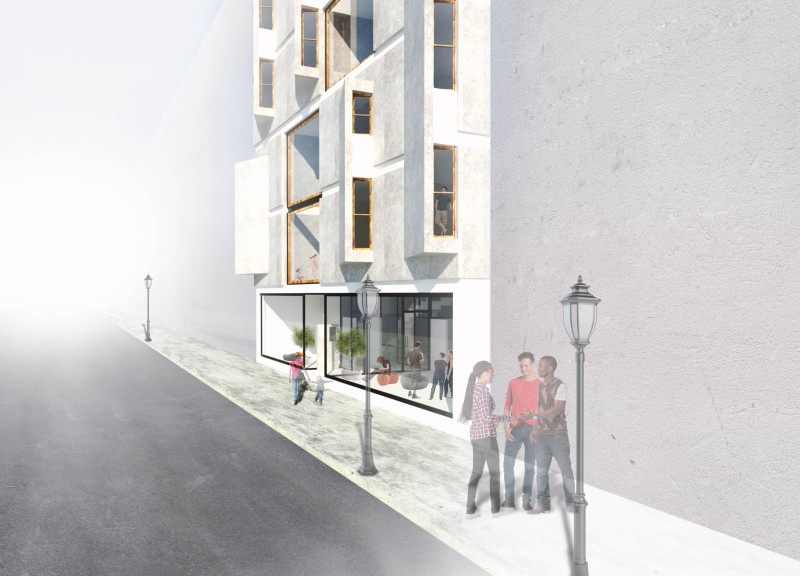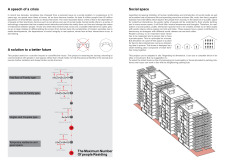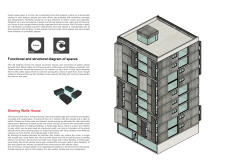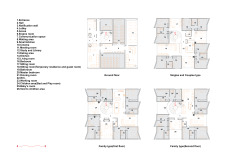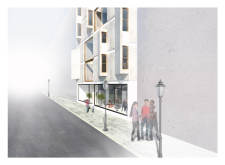5 key facts about this project
The design addresses the important social issue of loneliness in urban settings, particularly in Great Britain. The aim is to create a living environment that encourages community connections while respecting personal privacy. By combining private and shared spaces, the design promotes interactions among residents and fosters a sense of belonging.
Community-Centric Design
The core idea focuses on modular living. The layout positions private units around a central public area, allowing for both social gatherings and individual solitude. This arrangement takes into account contemporary life's challenges and responds to the necessity of spaces that encourage real-life connections among people.
Public Interaction Spaces
An important aspect of the design is the emphasis on public interaction areas. These spaces serve as venues for conversation and social activities, which helps reduce feelings of isolation that can arise in city life. With well-planned and inviting areas for interaction, the design aims to build a welcoming community environment.
Spatial Quality and Emotional Impact
Good design is about more than just utility; it impacts social well-being. By prioritizing well-designed communal spaces, the project nurtures an inviting environment that encourages participation. This aspect is crucial for helping create supportive social settings, especially in urban areas where people often feel alone.
Adaptability for Urban Settings
The flexible framework of the design makes it suitable for various urban locations. It can be adapted to meet the specific needs of different communities while maintaining its focus on enhancing social well-being. The layout and focus on shared amenities provide a clear route to improve interactions among residents.
Central public spaces encourage engagement, featuring greenery and seating arrangements that invite residents to connect with one another. These elements create a lively atmosphere for conversation and community gathering.


